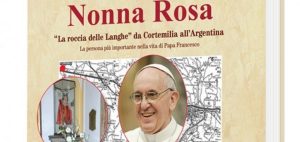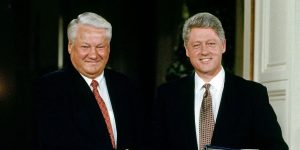Across Europe and the United States rich people are buying nuclear bunkers at €183,000 and over. Others are buying units in privatised government nuclear shelters, abandoned 70 years ago for being impractical.
British expert in Cold War bunkers, Emily Glass says that governments realized they would need to build “a whole city underground” if they were to protect their civilian populations and sustain them until they could safely emerge — months or years later. “The military instead [put] their faith — and the bulk of funds … — into [making more] nuclear weapons, part of a “policy of deterrence via mutually assured destruction.”
On 3 January 2022 the leaders of the five largest nuclear-armed states jointly reaffirmed that “a nuclear war cannot be won and must never be fought”.’
Yet, a total of €354 billion have been spent by these five countries (USA, Russia, China, France, UK) and four others (India, Pakistan, North Korea and Israel) who have nuclear weapons to build and maintain, on their nuclear arsenals over the past five years. Global security would be much better protected if there were universal health care for the people of the nine nuclear armed countries and the rest of the world, high quality education and training, affordable housing, environmental justice, sustainable development, clean water and adequate nutrition for all, and full global disarmament rather than spending more on more armaments.
Stockholm International Peace Research Institute (SIPRI) Director Dan Smith says that the trend to spend more on nuclear armaments “seems likely to continue and probably accelerate in the coming years and is extremely concerning… We are now in one of the most dangerous periods in human history. There are numerous sources of instability—political rivalries, economic inequalities, ecological disruption, an accelerating arms race. The abyss is beckoning and it is time for the great powers to step back and reflect. Preferably together.’
The opposite is happening. Funding allocated to disarmament efforts is insignificant by comparison. India, Pakistan and North Korea are all pursuing the capability to deploy multiple warheads on ballistic missiles, something Russia, France, the UK, the USA and China already have. This would enable a rapid potential increase in deployed warheads, as well as the possibility for nuclear-armed countries to threaten the destruction of significantly more targets. Wilfred Wan, Director of SIPRI’s Weapons of Mass Destruction Programme says: ‘We have not seen nuclear weapons playing such a prominent role in international relations since the cold war.’
To make it worse nuclear arms control is at its weakest and at the moment the world is like a high wire walker operating without a safety net. Diplomacy and dialogue, needed mostly with one’s ‘enemies’ have been killed. Nuclear war in 1962 during the Cuban Missile Crisis was averted through diplomacy and dialogue between the United States and the Soviet Union. Former US Secretary of Defence William Perry said: If Kennedy had accepted the unanimous recommendation of his Joint Chiefs of Staff, which was to invade Cuba with conventional forces, our troops would have been decimated on the beachhead, and a general nuclear war would surely have followed. We were amazingly close to a civilization-ending nuclear war in Cuba, even closer than I realized at the time because I didn’t know some of those things. That’s a very scary situation.
But I want to emphasize one very important point. Neither Kennedy for the USA nor Khrushchev for the Soviet Union wanted a nuclear war. In spite of that, we almost blundered [into] one.”
79 years ago during World War II, on August 9th 1945, the United States dropped a nuclear bomb on the Japanese city of Nagsaki, three days after it had dropped another one on Hiroshima. At 11:02 a.m., the bomb exploded over Nagasaki with 200,000 residents. The yield of the explosion was later estimated at 21 kilotons, 40 percent greater than that of the Hiroshima bomb. Although the destruction at Nagasaki has received less worldwide attention than that at Hiroshima, it was still very extensive. According to the US Energy Department: “Almost everything up to half a mile from ground zero was completely destroyed, including even the earthquake-hardened concrete structures that had sometimes survived at comparable distances at Hiroshima….The best estimate is 40,000 people died initially, with 60,000 more injured. By January 1946, the number of deaths probably approached 70,000, with perhaps ultimately twice that number dead total within five years. For those areas of Nagasaki affected by the explosion, the death rate was comparable to that at Hiroshima.”
According to a Nagasaki Prefectural report “men and animals died almost instantly” within 1 kilometer (0.62 miles) of the point of detonation. Almost all homes within a mile and a half were destroyed, and dry, combustible materials such as paper instantly burst into flames as far away as 10,000 feet from ground zero. Of the 52,000 homes in Nagasaki, 14,000 were destroyed and 5,400 more seriously damaged. Only 12 percent of the homes escaped unscathed. A U.S. Navy officer who visited the city in mid-September reported that, even over a month after the attack, “a smell of death and corruption pervades the place.”
Miyako Taguchi. one of the second generation of the nuclear bomb survivors from Nagasaki says: “For many people, the atomic bombings in Hiroshima and Nagasaki are just events in a history book and the Second World War was ended on August 15 in 1945. For me, the war is still ongoing… such a tragedy can happen again because we have over 23,000 nuclear weapons worldwide today. I said, ‘We’ because it does not matter which country possesses the nuclear weapons. It is the global community’s problem.
“It is said that there are over 400,000 victims of the two atomic bombings. Among the people who were killed, there were mothers and fathers, daughters and sons, grandmothers and grandfathers, babies and unborn babies. Imagine your family members and friends among them. We all deserve peace in our lives. Learning from our history, it is obvious that wars and nuclear weapons will never give us peace.”
Times 9 August 2024




